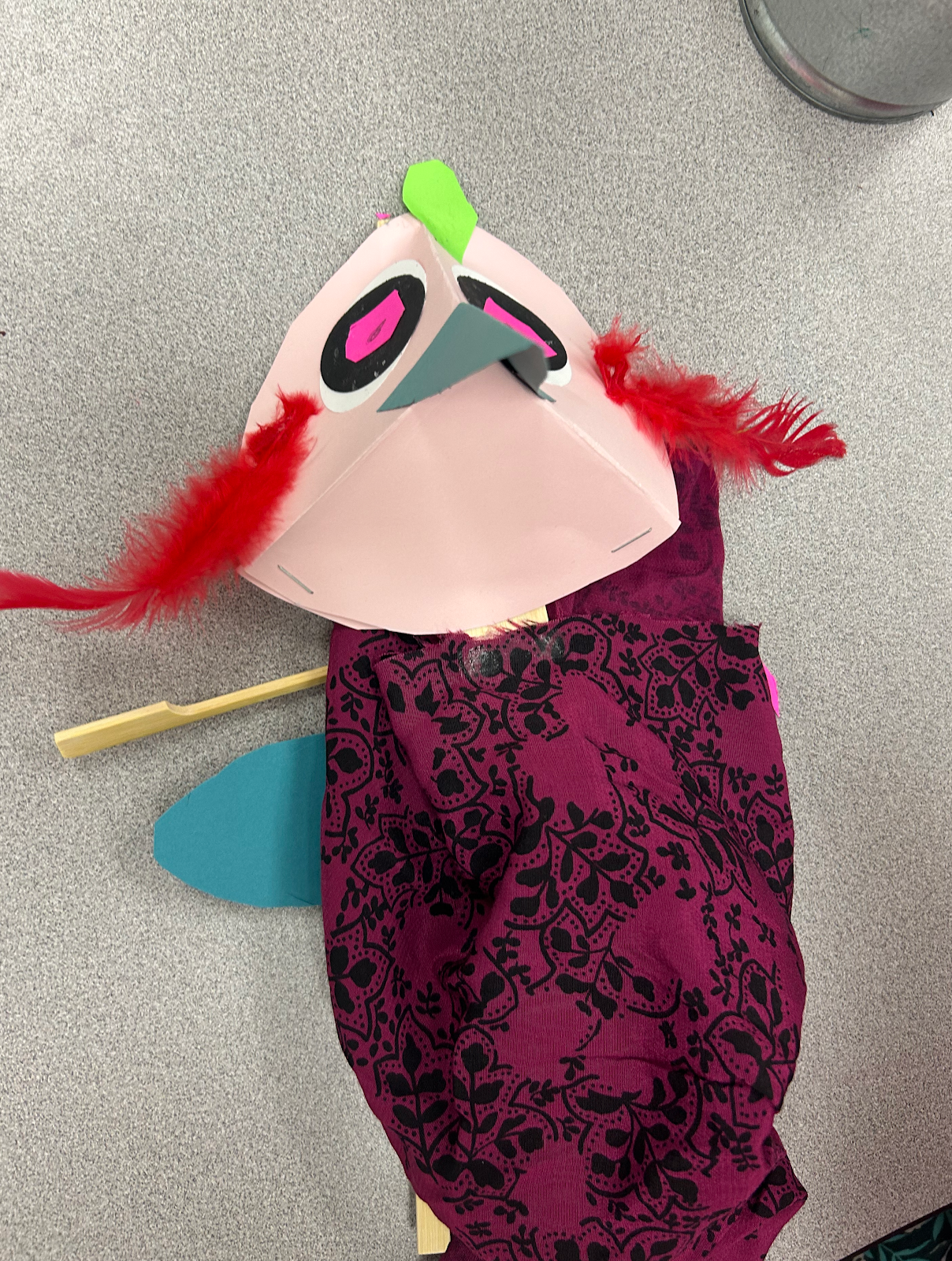February 20-23
After Family Day long weekend, we found ourselves returning to our school routines and learning in Grade 1. Here are some of the highlights from the week.
Puppet Residency
We enjoyed our final session with Miss Wendy and adding the final touches to our puppets. We worked on adding the eyes and had an “eye opening ceremony.” Our puppets truly did seem to come to life at this moment and they all look so unique and special. We don’t want to give away too many details, as we look forward to sharing our work around this learning with you on Wednesday, February 28. We look forward to seeing families at our presentation at 10:30-11:00 in the Music room. With Miss Wendy, she also worked with us on changing our voices and guided us through moving our puppets around the room. We are now busy with creating our short skits connected to the story, The Owl and the Woodpecker, and sharing our own creative stories of some birds with some problems.
Learning Intentions
I can create imaginative representations or dramatizations of stories that include characters, setting and events using puppets.
I can present stories or dramatizations as part of a group and adjust my voice for the audience
Social Studies - Landmarks
Learning Intentions
I can recognize different landmarks and places in my community.
I can show understanding of why these landmarks and places are significant features of my community
We spent some time this week learning about an iconic landmark to Calgary - the Calgary Tower. We learned about what makes this landmark special and some of its special features and historical context. We then drew our own picture of this landmark and added key words and ideas to connect to our understanding.
Makerspace
We wrapped up the week with time in Makerspace. Mrs. Harris had us return to the same winter story and challenges to solve a problem of being in the forest with our dog Pickles. We worked on a different challenge and had new group members. With our group, we focused on different things to build. We worked together as a group, focusing on making sure we were compromising with our group members if we each had different ideas about what to build. We were very focused and used our communication skills well.
Math
Learning Intention:
I can break apart a set of objects by sharing and grouping.
Composing Numbers
Generally, “to compose” means to create something by putting things together. You compose numbers by putting together two or more quantities to create a larger quantity. For example, you can put together 3 tens and 4 ones to create 34.
You can put together more than just tens and ones.
For example, if you put together 4 eights and 4 ones, you would get 36.
If you put together 8 and 11 and 20, you would get 39.
Decomposing Numbers
Generally, “to decompose” means to break something into parts. You decompose numbers by breaking them up into smaller quantities.
For example, you can break 56 apart into 5 tens and 6 ones.
You can also break 56 apart into 8 groups of 7.
You could also break 56 apart into 11 groups of 5 and 1 more.
Helping Your Child With New Words
Ask your child to put together some smaller numbers to create bigger numbers. As you talk about the task, use “put together” and “compose” interchangeably so that your child will learn that they mean the same thing.
Similarly, ask your child to take apart a big number. As you talk about the task, use “take apart” and “decompose” interchangeably so that your child will grasp that they mean the same thing.
Helping Your Child
When items come in packs (e.g., of 2 or 3 or 4), have your child figure out how many items are in several packs.
Alternatively, ask your child to figure out how many packs you need to open to have a particular number of items.





